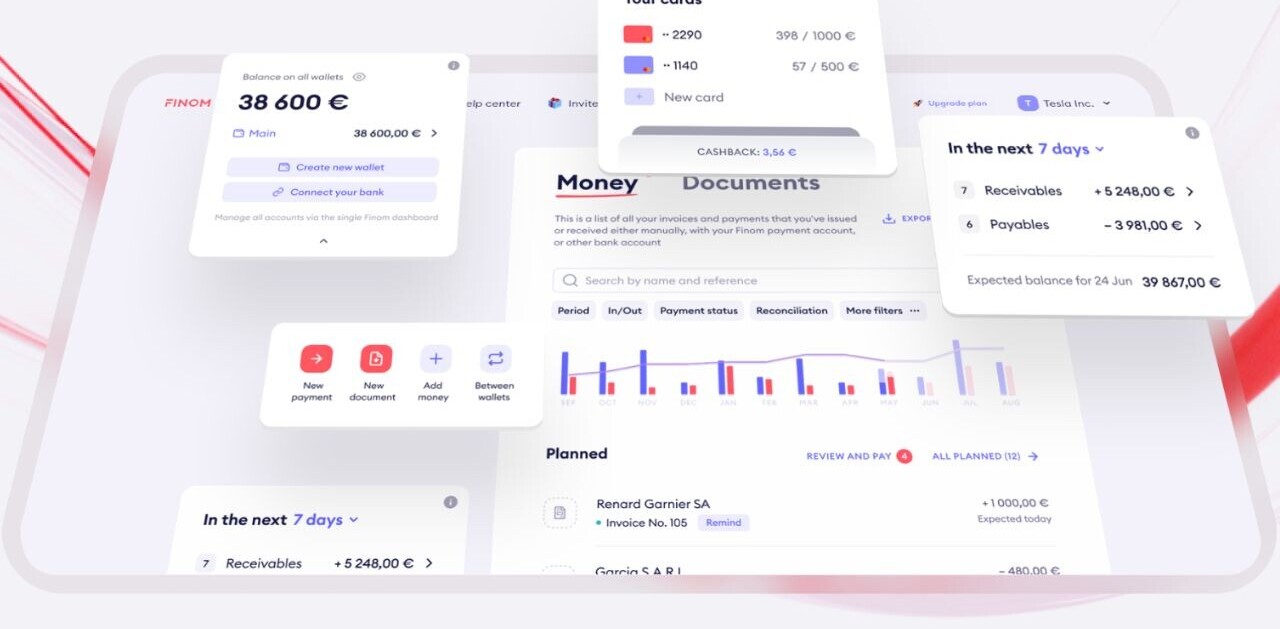
The traditional business model is under attack… as well it should be.
In this era of disruption, it’s absolutely necessary to redefine business models and archetypes as a whole. This post dives into the benefits of blockchain, its impact on the financial system, and how some companies are experimenting.
Traditional financial services companies, and banks, in particular, are behind the curve in terms of technology. An Accenture report claims that most big banks have systems as old as the 1970s or even 1960s, which mean that newer IT systems are just patched on top of the core to deliver online and mobile banking capabilities. This means that most of the budget is used for maintenance rather than for innovation as their aging systems are creaking.
Taking the adoption of mobile and online banking as an example, most companies wait until a technology reaches a certain level of maturity before investing in it. The fact that these incumbents use antiquated tech propels the rise of fintech companies who utilize technology to make financial services more efficient and could potentially disrupt the financial services industry.
Blockchain, however, has caught not only the eye of fintech companies but the traditional incumbents as well. The reason for this is that when mutual distributed ledgers (aka blockchains) hit maturity, it will have a sweeping impact on financial business models.
So, what exactly is a blockchain?

However, this particular blockchain has several features which financial services companies find compelling. It’s decentralized (doesn’t have a single point of failure), secure (utilizing cryptography to validate every transaction), immutable history (write-once, spend-only attribute of the ledger), efficient (exchange of information is fast and easy) and transparent (everything is documented).
To put it simply, multiple distributed ledgers are just a method of recording data digitally, and can be applied to anything that needs to be independently recorded and verified as having happened e.g. transactions, agreements, contracts, ownership, etc.
According to a SWIFT Institute Working Paper, it is the robustness and relative simplicity of the Bitcoin blockchain that has sparked the interest of similar technology to be applied to wholesale markets’ securities settlement as this can potentially reduce costs and risks.
And according to a White and Case report, a similar blockchain can also be used to improve and enhance currency exchange, supply chain management, trade execution and settlement, remittance, peer-to-peer transfers, micropayments, asset registration, correspondent banking and regulatory reporting (relating to “know your customer” and anti-money-laundering rules).
Long term cost-benefit
In a broad sense, all these financial services processes are experiencing operational inefficiencies due to both sides of a trade, transaction or transfer of information or assets keeping separate records of the event (and if applicable future obligations).

Risk benefit
Fragmentation of security operations could affect spikes in ‘trade fails’ during market stress. The SWIFT Institute Working Paper cited earlier also claims that lack of transparency regarding security ownership and commitment in re-hypothecation combined with a commingling of client assets proved challenging in the resolution of Lehman Brothers International and could have been avoided through use of mutual distributed ledgers.
In plain English, it was hard to know who owns what, and which assets or transactions were linked to other assets or transactions, so you if your current or future transactions were affected by Lehman Brothers, it took time to figure it out.
A simplistic example is that if Lehman Brothers were A, A owed B, B owed C, C owed D. If you were D, it might take time for you to realize that A might not be able to pay B, therefore C might not be able to pay you in the future because there is no way to trace back down the alphabet.
If a mutual distributed ledger was present, hypothetically D might know that A could be related to C ultimately repaying D because all assets and ownership of them are transparent.
Speed of execution

Since these can be customized on a contract by- contract basis, transactions can be streamlined by cutting out counterparties and intermediaries. This means that trades and contracts can potentially be executed at a much faster rate because the middlemen are replaced with techology.
The devil’s in the details
A caveat of all this interest in blockchain from the financial services industry is that it wants a similar technology with the perceived benefits, and not the actual blockchain underlying Bitcoin. This is because some of its current features will not work in a financial services context.
For example, the original blockchain that underpinned Bitcoin was permissionless. This meant that it was accessible to everyone and publicly verified, with the integrity of the system being crowdsourced through financial incentives.
Although effective, financial services institutions would most likely not be able to use this type of category since financial regulators would be unlikely to trust anonymous validators to maintain the system’s integrity. Financial services companies would more likely opt for a permissioned blockchain where they can appoint validators to confirm valid transactions and reverse transactions if required.
It’s also unclear to what extent the robustness and simplicity of the Bitcoin blockchain can be replicated within a financial services application, what form or variation the mutual distributed ledger would take and to what extent they should be applied in a wider financial services context. Therefore, a lot of research and experimentation has yet to unfold.

Technology built by Chain, Eris Industries, Ethereum, IBM and Intel were used to run smart contracts programmed to facilitate issuance, secondary trading and redemption of commercial paper. Smart contracts were based on identical business logic to identify the performance difference of the technologies.
ABN AMRO, on the other hand, is looking at how blockchain smart contracts can be applied to problems in trade finance and transaction banking e.g. how the technology can facilitate issuance of letters of credit, in which a bank guarantees that a buyer’s payment will be received according to the agreed set of conditions. The bank has invested in Digital Asset Holdings, a developer of Distributed Ledger Technology for the financial services industry.
Citigroup is looking at private blockchains as well as an internal currency focusing on payments and eliminating counterparty risks when dealing with smaller local banks. Finally, Santander has identified 20 to 25 possible applications of blockchain technology in banking, including international remittance, syndicated lending and collateral management.
There are a host of other startups, companies and organizations that are experimenting with mutual distributed ledgers and blockchain technology. However, the jury is still out on who will win and who will lose.
Get the TNW newsletter
Get the most important tech news in your inbox each week.
Whatever your specialism, with ABN AMRO your talent and creativity will help build the bank of the future. Find out what it’s like to work for ABN AMRO and learn more about their exciting job opportunities.






